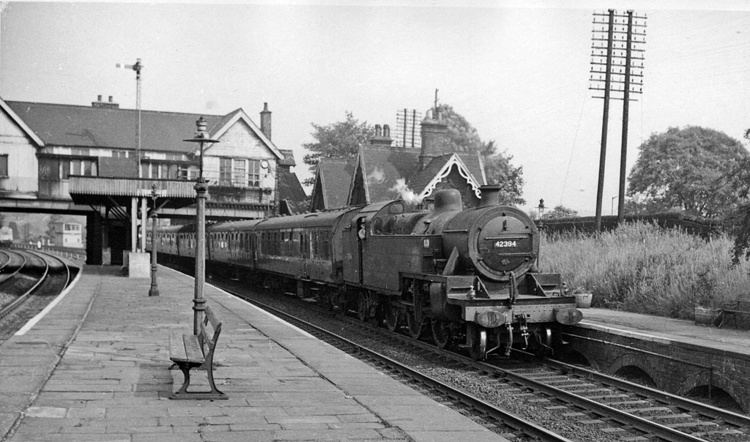Headquarters Bradford, United Kingdom | Founded 1843 | |
 | ||
The Leeds and Bradford Railway (L&BR) was formed in 1843 to bring the railway to Bradford: the line opened on 1 July 1846. The company was always closely allied with the Midland Railway, and within ten years the L&BR had been absorbed into the Midland, and disappeared.
Contents
History
The line and the two termini opened on 1 July 1846, with hourly services between the two and some direct services from Bradford to London Euston via Derby and Rugby. The nine intermediate stations opened within the next few weeks.
From 1848 an extension of the line ran via Skipton southwest towards Colne where it joined the East Lancashire Railway in 1849. This 11½ mile stretch was closed in January 1970. Today there is an active campaign to reinstate this missing stretch, led by the Skipton - East Lancashire Rail Action Partnership.
Background to construction of the line
During the 18th century, Bradford was becoming an important centre of the wool trade, but was beginning to be hampered by the cost of transport—the town is not on a river of any size, and moreover is in a deep valley. During the 1760s and 1770s, a group of Bradford businessmen were the driving force for creating the Leeds and Liverpool Canal and its offshoot the Bradford Canal, in order to improve the town's communications.
The canals were very successful for Bradford; but from the 1830s, railways began to be built around the country, and again a group of Bradford businessmen were eager to benefit from this development. Various schemes were started, but none received enough support. Nor could the North Midland Railway be persuaded to extend its Derby to Leeds line to Bradford.
At last in 1843 they succeeded in forming the Leeds and Bradford Railway company, with George Hudson (known as the 'railway king') as chairman. They obtained the necessary Act of Parliament in July 1843, to build a line from Wellington Street, Leeds to Bradford via Shipley; and also a link to the North Midland Railway's terminus at Hunslet Lane, to allow connections to the south.
The engineer in charge of the project was George Stephenson, who had been one of the engineers for the NMR's line. He routed the line up the Aire valley to Shipley, and then south up Bradforddale to Bradford—the only reasonably flat approach to Bradford.
George Hudson was also chairman of the North Midland, and in 1844 he had persuaded the NMR and two other companies he controlled to merge, forming the Midland Railway. With him involved in both companies, the Midland was closely associated with the L&BR from the start, but they remained separate entities for a few years. However, by 1853 the Midland had absorbed the L&BR.
The line today
Today the line, and the four surviving stations on it, are run by West Yorkshire Metro: they form parts of the Leeds-Bradford Lines, the Airedale Line and the Wharfedale Line. Most services are provided by Northern Rail, with a few long-distance services from East Coast.
Features of the line
The stations and other features of the line were as follows, in order from Leeds to Bradford. Unless otherwise noted, the stations all closed on 22 March 1965.
